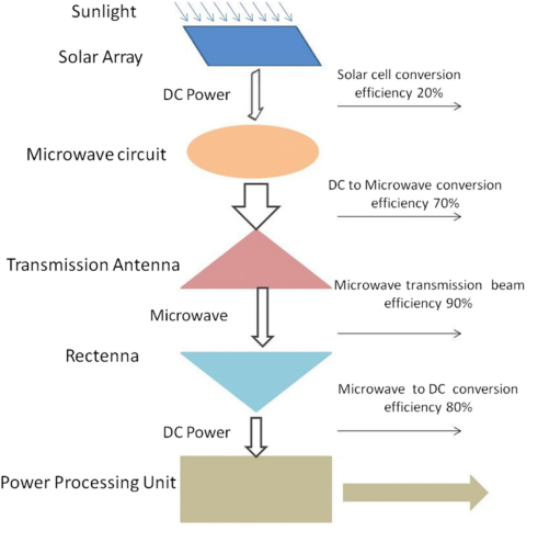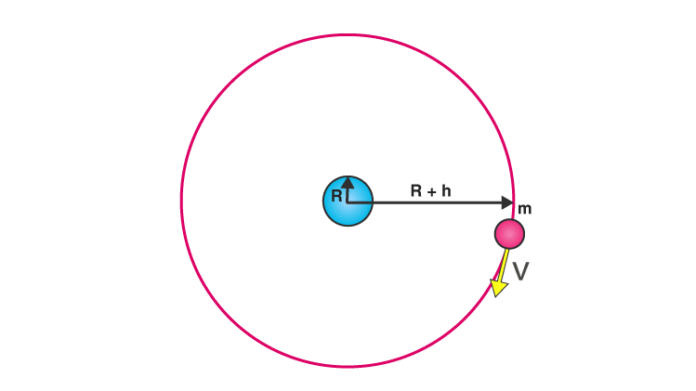Energy Orbiting Satellites: As the world’s population grows and our energy needs continue to increase, the search for new sources of clean, renewable energy has become more urgent than ever. One idea that has been explored for decades is the concept of energy-orbiting satellites, which would capture solar energy in space and transmit it wirelessly to Earth. While the idea of space-based solar power is still in the conceptual phase, it has the potential to revolutionize the way we think about energy production and help us transition to a more sustainable future. In this article, we will explore the concept of energy-orbiting satellites in more detail, including the technology behind it, the challenges that must be overcome, and the potential benefits and drawbacks of this innovative idea.
Introduction:
The idea of energy-orbiting satellites, also known as space-based solar power, has been captivating scientists and policymakers for decades as a potential solution to the world’s energy crisis. The concept involves harnessing the power of the sun in space and beaming that energy back to Earth wirelessly to provide a clean, renewable source of energy. With the world’s energy needs expected to double by 2050, and concerns about climate change and energy security growing, the idea of energy-orbiting satellites has once again gained momentum in recent years. In this article, we will delve deeper into the technology behind energy-orbiting satellites, the challenges they face, and the potential benefits and drawbacks of this innovative idea. We will also explore the current state of research and development in this field, and what the future might hold for energy orbiting satellites as a viable source of energy for the world.
The technology behind Energy Orbiting Satellites:

The technology behind energy-orbiting satellites is complex and requires a high level of engineering expertise. The first step in the process is to design and build large solar panels that can collect energy from the sun more efficiently than on Earth. These panels are made up of photovoltaic cells that convert sunlight into electrical power. The panels are then mounted on the satellite, which is designed to be positioned in a geostationary orbit around the Earth.
Once the satellite is in orbit, the solar panels begin collecting energy from the sun. The energy is then converted into electrical power using power conditioning units and batteries that are located on the satellite. The power conditioning units convert the raw energy collected by the solar panels into usable electrical power, while the batteries store excess energy that can be used when the satellite is in the Earth’s shadow.
Once the electrical power has been generated on the satellite, it needs to be transmitted back to Earth. This is done using microwave power transmission, a process that involves beaming the energy from the satellite to a receiving station on the ground.
One of the biggest challenges in the technology behind energy-orbiting satellites is the microwave power transmission process. This involves beaming large amounts of energy wirelessly over long distances, which can raise concerns about the potential impact on the environment and human health. To address these concerns, researchers are working on developing new technologies that can improve the efficiency and safety of microwave power transmission.
The receiving station then converts the microwave energy into electrical power that can be fed into the power grid.
The challenges of Energy-Orbiting Satellites
While the idea of energy-orbiting satellites is promising, there are several significant challenges that must be overcome before energy-orbiting satellites can become a reality.
Cost:
One of the biggest challenges is the cost of designing, building, and launching satellites into space. These satellites are large and complex, which makes them expensive to manufacture and launch into orbit. The cost of launching a satellite into space can range from tens of millions to billions of dollars, depending on its size and complexity.
Microwave power transmission:
Another challenge is the issue of microwave power transmission. While the technology exists to transmit energy wirelessly using microwaves, there are concerns about the potential impact of beaming large amounts of energy wirelessly on the environment and human health. Some studies suggest that the radiation emitted during microwave power transmission could have negative effects on wildlife, such as birds and insects, as well as on human health. Researchers are working to address these concerns by developing new technologies that can improve the efficiency and safety of microwave power transmission.
Space debris:
Another challenge is the issue of space debris. Space debris is any man-made object in space that no longer serves a useful purpose, such as old satellites, spent rocket stages, and debris from collisions between objects in orbit. Space debris can pose a significant risk to satellites, as even small debris can cause damage or destroy them. The risk of space debris is especially high in geostationary orbit, where energy-orbiting satellites would be positioned. To mitigate this risk, researchers are exploring ways to design satellites to be more resilient to space debris and developing technologies to remove debris from orbit.
New infrastructure:
Finally, there are challenges associated with integrating energy-orbiting satellites into existing energy infrastructure. To be effective, energy-orbiting satellites would need to be able to transmit energy wirelessly to receiving stations on Earth and integrate with the existing power grid. This would require significant investment in new infrastructure and regulatory frameworks to ensure that the energy transmitted by the satellites is safe and reliable.
Potential Benefits of Energy-Orbiting Satellites:
Despite these challenges, energy-orbiting satellites have several potential benefits that make them worth exploring further. One of the most significant advantages is their ability to provide a clean, renewable source of energy that is available 24/7, regardless of weather or time of day. They could also potentially reduce our reliance on fossil fuels and help us transition to a more sustainable future. Additionally, energy-orbiting satellites could be used to provide energy to remote areas or disaster-stricken regions where traditional power sources are unavailable.
Applications of energy orbiting satellites:
Energy orbiting satellites have the potential to revolutionize the way we generate and transmit energy, with a wide range of potential applications across industries. Here are some of the most promising applications of this technology:
- Providing renewable energy to remote areas:Energy-orbiting satellites could be used to provide renewable energy to remote areas that are not connected to the power grid. By beaming energy wirelessly to these areas, energy-orbiting satellites could provide a reliable and sustainable source of power for communities that are currently dependent on fossil fuels or traditional energy sources.
- Meeting growing energy demands:As the world’s population continues to grow, so does the demand for energy. Energy orbiting satellites could provide a significant source of clean, renewable energy to meet this growing demand, without the need for new infrastructure on Earth.
- Reducing carbon emissions:Energy orbiting satellites generate electricity from the sun, which is a clean and renewable source of energy. By replacing fossil fuels with renewable energy, energy-orbiting satellites could help to reduce carbon emissions and mitigate the impacts of climate change.
- Enabling long-term space missions:Energy orbiting satellites could provide a reliable source of energy for long-term space missions, such as manned missions to Mars. By providing a self-sufficient source of power, energy orbiting satellites could reduce the need for resupply missions and enable longer stays in space.
- Improving disaster response:Energy-orbiting satellites could be quickly deployed to disaster-stricken areas to provide emergency power. By beaming energy wirelessly to these areas, energy-orbiting satellites could provide a reliable source of power for rescue and relief efforts.
- Enhancing national security:Energy orbiting satellites could provide a reliable and secure source of energy for critical infrastructure, such as military bases and government buildings. By reducing dependence on the power grid, energy-orbiting satellites could improve national security and resilience.
Frequently Asked Questions(FAQs)
Q: What are energy orbiting satellites?
A: Energy orbiting satellites are large, complex satellites that capture solar energy in space and transmit it wirelessly to receiving stations on Earth, where it can be converted into electricity.
Q: How do energy-orbiting satellites work?
A: Energy orbiting satellites capture solar energy using solar panels and convert it into microwave energy, which is then beamed wirelessly to receiving stations on Earth. The microwave energy is then converted into electricity using rectifying antennas.
Q: What are the benefits of energy orbiting satellites?
A: Energy orbiting satellites have several benefits, including providing a reliable and sustainable source of energy, reducing carbon emissions, and meeting growing energy demands.
Q: What are the challenges of energy orbiting satellites?
A: The challenges associated with energy-orbiting satellites include the cost of building and launching the satellites, concerns about the potential impact of microwave power transmission on the environment and human health, the risk of space debris, and the need to integrate the technology with existing energy infrastructure.
Q: How much energy can energy orbiting satellites generate?
A: The amount of energy that energy orbiting satellites can generate depends on their size and the amount of solar energy that they can capture. Estimates suggest that a single energy-orbiting satellite could generate enough energy to power a small city.
Q: When will energy orbiting satellites be available?
A: Energy-orbiting satellites are still in the development phase, and it is difficult to predict when they will be available for widespread use. However, some experts believe that we could see the first energy-orbiting satellites in operation within the next decade.
Q: What are the potential applications of energy orbiting satellites?
A: The potential applications of energy orbiting satellites include providing renewable energy to remote areas, meeting growing energy demands, reducing carbon emissions, enabling long-term space missions, improving disaster response, and enhancing national security.
